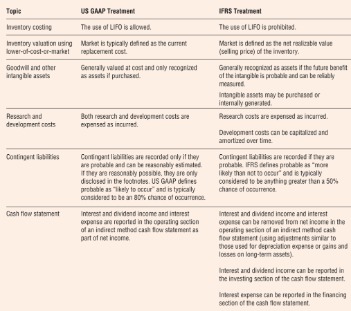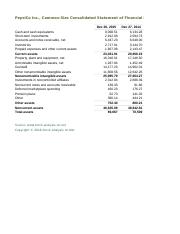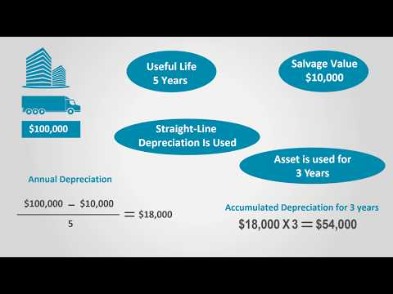
It supports online payments using debit cards, credit cards, direct debit using GoCardless, and Apple Pay or Google Pay using Stripe. It uses encryption and strong security measures to protect against fraud. QuickBooks is Intuit’s general accounting software, while QuickBooks Online (QBO) is specifically the cloud-based service. For QBO, you pay a monthly subscription rather than an upfront fee, and you get all the patches and software updates from Intuit.

Lessons in running a thriving business from Paul Walden Interiors
For those moving their small business’ accounting over from another application, you can import data into QuickBooks Online using the Import Data function. Help is accessible from any data-entry screen, and a demo company is available for those who want to enter practice transactions without worrying about messing up their own data. Xero’s main entry screen uses a menu bar at the top of the screen for access to system functions. This pared-down menu makes it easy for new users to find their way around the application without too much trouble.
Is there a good alternative to Xero accounting software?
The best choice depends on your needs — go through your existing business software and financial tools and see which platform they’ll integrate with. Also, consider whether you want to add other services, like payroll or inventory management, that are available through integrations. Xero is an easy-to-use what is overtime Accounting solution for growing businesses. Businesses can now manage Invoices, Payroll, Bank Reconciliation, Purchasing, Expenses, Bookkeeping, and more, all in one application, thanks to Xero. Xero offers simple inventory tracking software that can track up to 4,000 finished items.
You’re All Set
Finally, the “Uncleared Transactions” Report, which Accountants commonly run to show customers why their balance is lower than what is in the bank, is worth mentioning. In Xero, there’s no option to run this View from the Software’s Reports section. Furthermore, if you wish to run a Detailed Report on accounts receivable or payable, Xero does not provide a mechanism to total the Information by Client or Vendor. QuickBooks Online, on the other hand, makes it simple to get to this type of View. The Bank Balance should ideally be pulled straight from the bank, therefore Xero’s Bank Feed features aren’t as appealing as QuickBooks Online’s.
Pricing Plans
It lets users view transactions, invoices, or bills in a foreign currency. Users get insights into business cash flow with the status of expense claims, bills, and details of money coming in with charts and graphs. Xero’s financial reporting features start with its interactive reports and budgets, updated in real time throughout the week. You can set specific how to stop child support in texas when a child turns 18 KPIs, and can jump to detailed transactions when you need more info. Reports can be customized with different columns, formulas, text blocks, or drag-and-drop accounts. This is because QuickBooks offers an add-on specifically for time tracking, starting at $20 per month (plus $8 per user), while Xero bundles time tracking with its main service.
- Use for Accounting, bookkeeping, payroll, invoice, expense tracking.
- The Bank Balance should ideally be pulled straight from the bank, therefore Xero’s Bank Feed features aren’t as appealing as QuickBooks Online’s.
- Users can also generate sales tax summaries, edit tax rates whenever needed, and prepare tax reports for return.
- You have a search bar or filters such as transaction type, Data Type, and Date Range.
- QuickBooks generates sharable mileage reports with a breakdown of miles and potential deductions.
You must return to the Chart of Accounts, add the account, and then come back and add the Transaction from Online Banking. Xero and QuickBooks Online differ when it comes to Adding a New Account. For example, if it’s the first time you’ve paid for a product or service. The search for the best Business Accounting Software can be challenging, involving determining what features you require, your budget, and, of course, comparing the various options available.

QuickBooks Online takes the lead because it’s generally easier to use than Xero. While Xero is easier to set up, QuickBooks has a more intuitive and customizable dashboard and has time-saving features. For instance, QuickBooks Online allows you to add an inventory item from the invoicing screen, something you can’t do with Xero. For instance, If you have complex bookkeeping needs and require a QuickBooks-specific virtual bookkeeping service, then choose QuickBooks Live. However, if you want a more scalable solution with the option to hire additional services like payroll and tax filing, then Xero is the more suitable choice. NerdWallet independently reviews accounting software products before determining our top picks.
Scheduling payments is an excellent way to avoid late fees, keep up with purchase orders, and keep your finances in top shape. QuickBooks Live doesn’t offer tax filing or payroll services, unlike Bookkeeper360. Prices for QuickBooks Live Bookkeeping scale with the monthly expenses of your business, which means higher costs for businesses with higher expenses. We break down the prices in our QuickBooks Live Bookkeeping review’s pricing section. Another reason QuickBooks Online stands out is its ability to calculate sales tax rates automatically based on the customer address, which is something Xero can’t do. Hence, it’s no surprise that QuickBooks Online is our overall best invoicing accounting software.
It lets you monitor project costs in real time and compare them to estimated profits. Our range of simple, smart accounting software solutions can help you take your business to the next level. As a business owner it’s crucial that you keep on top of your company’s financial health at all times, including profit and loss, balance and cash flow. QuickBooks splits its pricing plans into two categories – one for freelancers and sole traders, and another for businesses.
What sets Xero apart is its emphasis on simplifying accounting concepts for individuals who may be unfamiliar with financial jargon. Moreover, Xero’s tiered pricing incorporates a range of features that make it particularly suitable for growing businesses. Choosing the right accounting software plays a significant role in managing your business’s finances. Accounting software helps you complete bookkeeping tasks, track expenses and revenue, and send invoices to your customers.
For example, when you purchase the Pro Plus Desktop plan, you can have up to three concurrent users but each of those users must pay for their own account (at $349.99 each per year). Its Online version allows up to 25 users at no additional cost, provided you’re paying for the Advanced plan. Another key difference between the two companies is the maximum number of users it allows. Xero has no limit to how many users can access data, whereas QuickBooks limits this to 40 with its Enterprise plan.
QuickBooks Online and Xero are well-known cloud-based business accounting software solutions that are a favorite of growing companies due to their affordable pricing and scalability. Accounting features such as invoicing, accounts payable and receivable, and inventory management help your business stay organized and profitable. QuickBooks was created in 1983 by Intuit, garnering nearly 40 years of development behind it. A New Zealand-based company launched Xero in 2006 to challenge the growing accounting software market. Intuit also offers QuickBooks Desktop versions for companies that require it, but in this guide, we will compare the Online version. Xero and QuickBooks are two the of most popular accounting software solutions for small businesses looking to keep track of finances.
While searching for accounting software, you might also come across something called QuickBooks Online Essentials. This is a different product than the ordinary accounting software, and it’s specially designed for service-based businesses which invoice for their time. With this tool, you can automate assignment of contract meaning invoices on a recurring schedule, track income and expenses and pay multiple vendors at the same time. QuickBooks has long been the gold standard among small business accounting platforms. Although it’s not the only accounting software we recommend, it’s a great choice for any small business.
Learn about the differences between QuickBooks and Xero accounting software to decide which one is right for your business’s needs. QuickBooks Online’s customer support is better than Xero’s since you can interact with an agent through a phone call. You can’t initiate a call, but you can submit a ticket and wait for an agent to call you.
The Contacts category lets you manage all contacts, from customers to suppliers to contractors, from one location. Reporting in Xero is solid, with a variety of financial statements and management reports available. QuickBooks Online, an offshoot of the popular QuickBooks Desktop application, is a good fit for small and growing businesses. Our only QuickBooks bill-paying disappointment was that you can’t access the feature via the Simple Start package. If the most affordable QuickBooks solution is your priority, you forgo the ability to pay bills through your software.
QuickBooks boasts a vast ecosystem of integrations, covering everything from payroll to inventory management. Its long-standing market presence has allowed it to build partnerships with a wide range of software providers. The cheapest combo, QuickBooks Simple Start + Payroll Core, is $75 per month plus $5 per person. The monthly subscription price is a bit higher than Xero’s Gusto integration, but the price per user is lower, and it also has a few extra features like local tax filing. QuickBooks lets you see all of your customers and what they owe you. You can filter the list by a few criteria, like who has overdue invoices and who paid recently.






